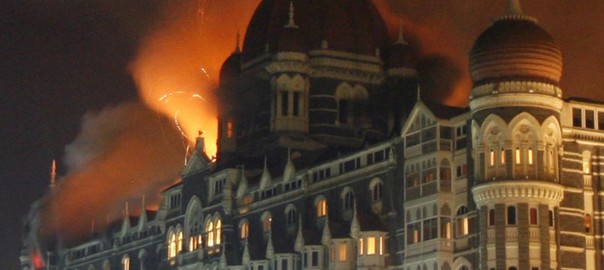The attacks in Mumbai were named by many the 9/11 of India. Not without reason, since it was a mega-hit that will constitute a landmark in the history of terrorism, because of the horror it caused. India certainly constitutes the target of terrorist activities for years now and for this reason the authorities of the country collaborate for their counterterrorism strategy and training with the Israelis (considered specialists in this sector). However, the simultaneous attacks in hotels and the Jewish religious centre, the kidnapping and killing in cold blood of tourists left the world speechless watching this new show of terror in the international scene.
The organization that carried out the attack bears evidently the Islamist seal. What investigations show (according the information in the media) are terrorists with their base in Pakistan. Moreover, a signal that reinforces the opinion about the Islamist character of the attack is the choice of the Orthodox Jewish Centre Chabbad as a target. Islamist fundamentalists identify Israel with the Hebrew religion and fail to distinguish between Jews around the world, Israeli citizens and the State of Israel.
The operational methodology the terrorists selected was not that of suicide attacks often selected by Islamists terrorists until now. This confirms that “martyrdom”
constitutes merely a method chosen and not an inevitable strategy for the Islamist extremist organizations that choose every time the handiest operational methodology. Despite the size of the hit, from an operational point of view there is no important innovation. The terrorists, as commando soldiers, with AK47 and grenades attacked hotels and a Jewish spiritual centre, keeping and executing hostages. The operational identity reminds the methodology of terror during the `70s and `80s. Distinguishing the hostages depending on the passport was a tactic followed by organizations for the liberation of Palestine; The terrorists during hijacks distinguished the airplane passengers, kept and killed those with Israeli passport, or foreign passport, but with a name betraying Jewish origin. In this particular attack in Mumbai the checking of passports and the execution of hostages was made against the holders of British and American passports, because their countries of citizenship lead the “war on terrorism” and constitute an enemy of the jihad.
The complicated plan and its military implementation imply a special training and preparation by the perpetrators that needed time and special space. Consequently, it does not appear likely that the preparation of the attack was limited to directions via Internet and jihadi websites (as it has happened in other “simpler” attacks). There must have existed a prior infrastructure of “training camp” where the terrorists “studied” and were “educated”.
Those who speak about a blow of “Al Qaeda type” do not essentially mean that Bin Laden himself decided this blow or that members of the hard core of his organization participated in the planning and execution. For years now Al Qaeda functions with a system of “franchising”. Its network includes small, local organizations that can decide autonomously and independently their action; however they share the same principles, ideal with the “mother” or “model” organization. The attack in India appears to serve the objectives of both local jihad (for example as a reaction against the alleged oppression of Muslims in the Kashmir) and a wider global jihad, regarding the expression of force and predominance of the Islamist ideal against the western forces engaged in the “war on terrorism” in Iraq and Afghanistan and of course against Israel.
Apart from the tragic assessment of victims, the tragedy in Mumbai has a strong symbolic impact. The choice of the time to strike was not accidental (and it shows the “usefulness” of the attack beyond the frontiers of India). For quite some time security authorities in various countries expected big scale terrorist activities by Islamist extremists, especially after the election of the new American President Obama. The message is that the jihadi fighters continue to exist and acting and that jihad also continues irrelevantly of the new American president and the policy he will choose. Other messages of this attack are interesting to those who study and analyze the phenomenon of this type of modern terrorism. President Bush may have accentuated the problem and strengthened the polarization between Islam and Western world; also, social and economic problems in the Middle East influence without doubt critically the issue. However, all the above do not explain exhaustively the phenomenon of Islamist terrorism. We are required to listen seriously the religious fanatic message sent by Islamist organizations that reveal a logic, very different from that of our societies. Fortunately the policy of the European Union in Community level, as well as in level of member states, aims precisely in fighting the terms that lead to the religious radicalization.
The question of Islamist extremist terrorism is much more complicated than some choose to believe. The western way of thought and “mathematic”, our sterilized analysis using our own cultural notion is unable to correspond to the threat. Those who continue interpreting Islamist terrorism with the terms of “conventional” terrorism, simply continue not to comprehend the phenomenon in its real dimensions and keeping us a step behind the developments and their confrontation. Mumbai was just an example.

